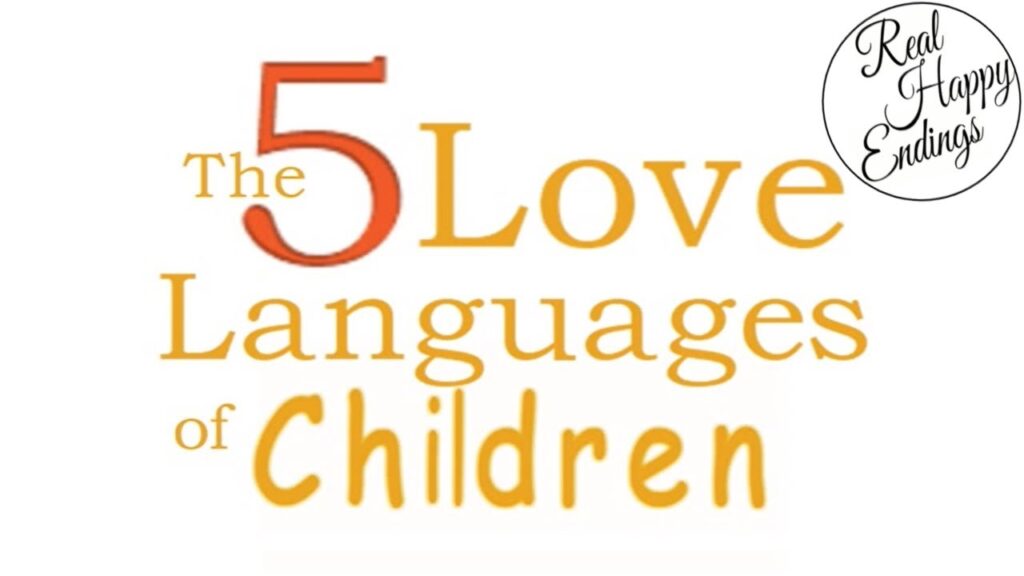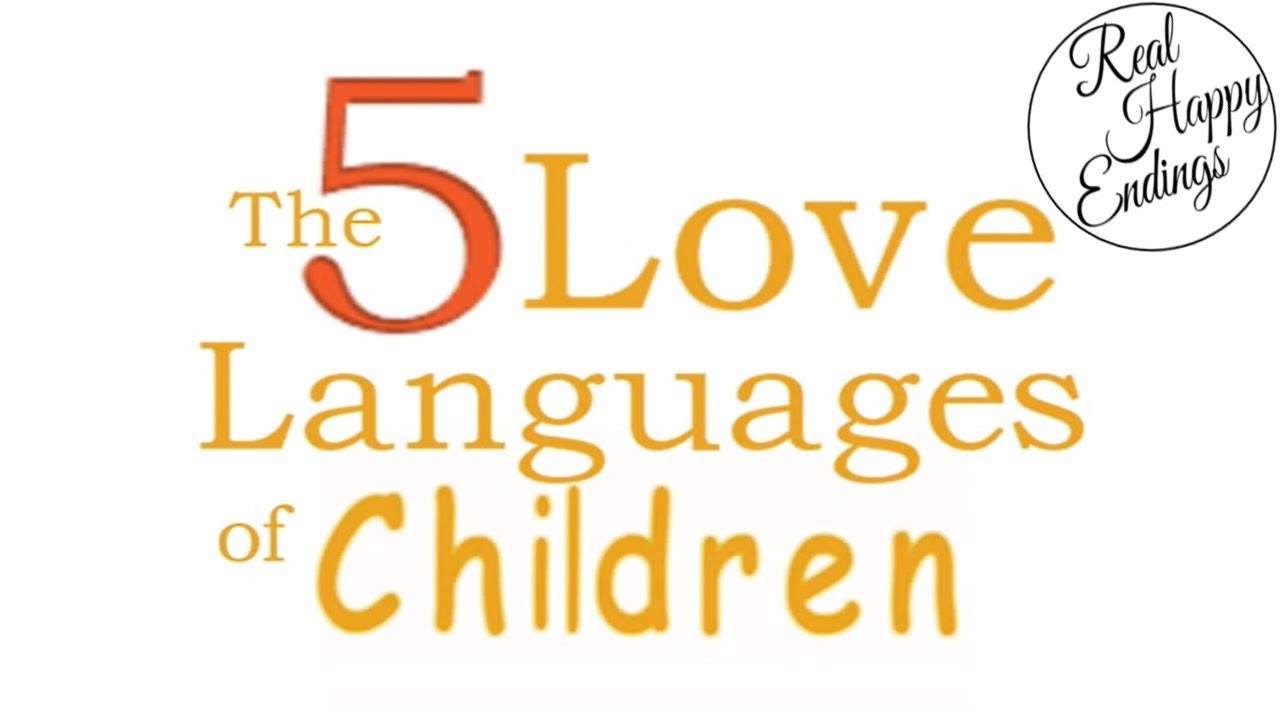
Unlocking Connection: Understanding The 5 Love Languages of Children
Understanding how your child feels loved and appreciated is crucial for building a strong, healthy relationship. Just like adults, children express and receive love in different ways. Recognizing and speaking your child’s primary love language can significantly enhance communication, foster emotional well-being, and strengthen the bond between parent and child. This article delves into the 5 love languages of children, providing practical insights and examples to help you effectively connect with your little ones.
What are The 5 Love Languages?
The concept of the 5 love languages was popularized by Dr. Gary Chapman in his book, “The 5 Love Languages: The Secret to Love that Lasts.” While originally focused on romantic relationships, the principles apply equally well to parent-child dynamics. These languages are distinct ways individuals perceive and interpret expressions of love. Identifying your child’s primary love language allows you to communicate your affection in a way that resonates most deeply with them.
The five love languages are:
- Words of Affirmation
- Acts of Service
- Receiving Gifts
- Quality Time
- Physical Touch
Exploring Each Love Language in Detail
Words of Affirmation: Encouragement and Praise
Children whose primary love language is Words of Affirmation thrive on verbal expressions of love, appreciation, and encouragement. They need to hear positive words to feel valued and loved. Simple phrases can make a world of difference.
Examples:
- “I’m so proud of you for trying your best.”
- “You’re such a kind and helpful child.”
- “I love your creativity and imagination.”
- “Thank you for helping me with that task.”
- “You’re doing a great job!”
Tips:
- Be specific with your praise. Instead of saying “Good job,” say “Good job cleaning up your toys so quickly!”
- Write them notes or leave encouraging messages in their lunchbox.
- Tell them how much you love them regularly.
- Focus on effort and progress rather than just outcomes.
Acts of Service: Actions Speak Louder Than Words
For children who resonate with Acts of Service, actions truly speak louder than words. They feel loved when you do things to help them, lighten their load, or make their life easier. It’s about showing love through practical assistance.
Examples:
- Making their bed or packing their lunch.
- Helping them with their homework.
- Driving them to their activities.
- Preparing their favorite meal.
- Taking care of a chore they dislike.
Tips:
- Ask them what tasks they find challenging and offer assistance.
- Involve them in age-appropriate chores to teach responsibility while also showing love.
- Be reliable and follow through on your promises.
- Do small acts of kindness without being asked.
Receiving Gifts: Thoughtful Tokens of Affection
Children whose love language is Receiving Gifts feel loved and appreciated when they receive tangible tokens of affection. It’s not about the monetary value of the gift, but the thought and intention behind it. The gift serves as a visual representation of your love.
Examples:
- Bringing them a small treat or toy.
- Giving them a handmade card or drawing.
- Picking a flower for them from the garden.
- Surprising them with a special book.
- Gifting them something they’ve been wanting for a while.
Tips:
- Pay attention to their interests and preferences when choosing gifts.
- Wrap the gift nicely, even if it’s small.
- Give gifts spontaneously, not just on special occasions.
- The gift doesn’t have to be expensive; a thoughtful gesture is more important.
Quality Time: Undivided Attention and Connection
For children who value Quality Time, undivided attention and focused interaction are paramount. They feel loved when you spend time with them, engaging in activities they enjoy without distractions. It’s about being present and fully engaged.
Examples:
- Playing a game together.
- Reading a book aloud.
- Going for a walk or bike ride.
- Having a conversation about their day.
- Doing a craft project together.
Tips:
- Put away your phone and other distractions when spending time with them.
- Let them choose the activity.
- Be fully present and engaged in the moment.
- Schedule regular one-on-one time with each child.
Physical Touch: Affectionate Contact and Closeness
Children whose primary love language is Physical Touch feel loved and secure through physical affection. This includes hugs, cuddles, kisses, holding hands, and other forms of non-sexual physical contact. It’s about feeling physically connected and close.
Examples:
- Hugging them good morning and goodnight.
- Cuddling on the couch while watching a movie.
- Holding their hand while walking.
- Giving them a back rub or head scratch.
- High-fiving them for a job well done.
Tips:
- Be mindful of their personal space and boundaries.
- Initiate physical touch frequently throughout the day.
- Pay attention to their cues and preferences.
- Make physical touch a natural part of your interactions.
Identifying Your Child’s Love Language
Discovering your child’s primary love language requires observation, experimentation, and open communication. Here are some strategies to help you identify it:
- Observe their behavior: Pay attention to how they express love to others. Do they frequently give gifts, offer help, or seek physical affection?
- Listen to their requests: What do they ask for most often? Do they want more of your time, help with tasks, or words of affirmation?
- Notice their reactions: How do they react when you express love in different ways? Which expressions seem to resonate most deeply with them?
- Ask them directly: Have a conversation about the 5 love languages and ask them which ones make them feel most loved and appreciated.
- Experiment: Try expressing love in each of the 5 love languages and observe their reactions.
The Importance of Speaking Multiple Love Languages
While identifying your child’s primary love language is essential, it’s also important to remember that they may appreciate expressions of love in all five languages. By speaking multiple love languages, you can ensure that your child feels loved and appreciated in a variety of ways. Aim to incorporate all five languages into your interactions with your child to create a well-rounded and fulfilling relationship. Understanding the 5 love languages is not a one-size-fits-all solution, but rather a framework to help you better understand and connect with your children.
Common Mistakes to Avoid
Even with the best intentions, parents can sometimes make mistakes when trying to speak their child’s love language. Here are some common pitfalls to avoid:
- Assuming your child’s love language is the same as yours: Remember that everyone experiences love differently.
- Neglecting other love languages: Focus on all five languages to create a balanced approach.
- Using love languages as a form of manipulation: Love should be given freely and unconditionally.
- Failing to adapt to your child’s changing needs: Love languages can evolve over time.
The Long-Term Benefits
Understanding and speaking your child’s love language offers numerous long-term benefits, including:
- Strengthened parent-child bond: Increased connection and understanding.
- Improved communication: Open and honest dialogue.
- Enhanced emotional well-being: Increased feelings of security and belonging.
- Increased self-esteem: Feeling valued and appreciated.
- Healthier relationships: Developing strong interpersonal skills.
By investing the time and effort to understand and speak your child’s love language, you can create a more loving, supportive, and fulfilling relationship that will benefit both you and your child for years to come. It’s about more than just saying “I love you”; it’s about showing it in a way they truly understand and appreciate. By actively engaging with the 5 love languages of children, parents can unlock a deeper level of connection and build lasting bonds with their kids. [See also: Positive Parenting Techniques] [See also: How to Build Self-Esteem in Children]

